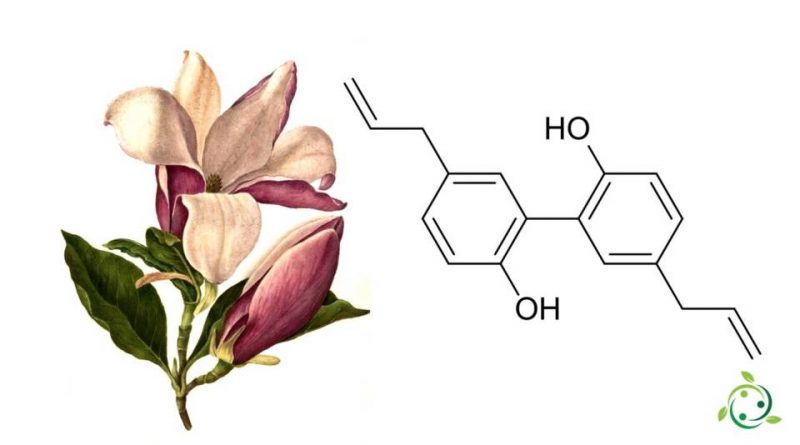Magnolol
Magnolol
Magnolol, whose term in the official IUPAC nomenclature is: 2- (2-hydroxy-5-prop-2-enylphenyl) -4-prop-2-enylphenol is a neolignano with a brute or molecular formula: C18H18O2.
Magnolol is a polyphenolic compound with a biphenyl structure, and is the structural isomer of honokiol. This molecule has two substituted isomeric bisphenolic nuclei each with an allyl function.
From the physical point of view it is not very soluble in water; has a solubility of 1.24 mg / l at a temperature of 25 ° C. The solubility is higher in the DMSO solvent.
Magnolol is a neolignano found in many medicinal plants used in traditional Chinese medicine for the treatment of numerous pathologies, such as gastrointestinal disorders, asthma, allergy, anxiety.
Magnolol is mainly extracted from the bark of the Magnolia (Magnolia officinalis Rehder & Wilson), a plant commonly called Hou Po, and from other species belonging to the Magnoliaceae family. The bark of the Magnolia also contains its isomer: honokiolo.
The total content of the two active ingredients is considered an important parameter to evaluate the quality of Magnolia.
The content of magnolol and honokiol in the bark of Magnolia officinalis is linked to different factors including: species, area of origin, age of the plant; in this sense it has been seen that the concentration of the two compounds is maximum when Magnolia officinalis reaches an age of around 27 years. Other factors that influence the concentration of active ingredients are the part of the plant (the roots seem to contain the highest percentage) and the extraction method used.
The importance of these two active ingredients is such that in China, prescriptions containing Hou Po are still in use in modern clinical practice.
For extraction, the bark is stripped from the stems, branches and roots. Magnolia bark is widely used in traditional Chinese medicine for the treatment of pain, diarrhea, cough and urinary problems. Magnolol and honokiol are responsible not only for the unmistakable fragrance of the plant, but also for numerous pharmacological properties, including those of anxiolytic, anti-inflammatory, antimicrobial, antioxidant, and antiplatelet agent.
An important activity of magnolol and honokiol is the reduction of states associated with psycho-physical stress, and as an anxiolytic. The beneficial effects on stress are linked to the control in the body of cortisol, which is the hormone that seems to be involved in stress diseases.
The magnolol content in magnolia bark is generally 2-10%, while honokiol is present in a smaller quantity (1-5%).
The mechanism of action of magnolol and honokiol is related to the modulation mechanism of the GABA receptor in vitro. The studies carried out suggest a selectivity of these two phenols on the GABA A subtypes. This possibility was evaluated by binding studies using 3H-muscimol and 3H-flunitrazepam. In particular, magnolol and honokiol have a greater affinity for the a2 subunit. This action is independent of the g subunit. When present in high concentrations, magnolol and onochiol are shown to have the same selectivity for the GABA A receptor subunits.
Other properties are related to neurotrophic, antimicrobial and antifungal activities.
Warning: The information shown is not medical advice and may not be accurate. The contents are for illustrative purposes only and do not replace medical advice.

